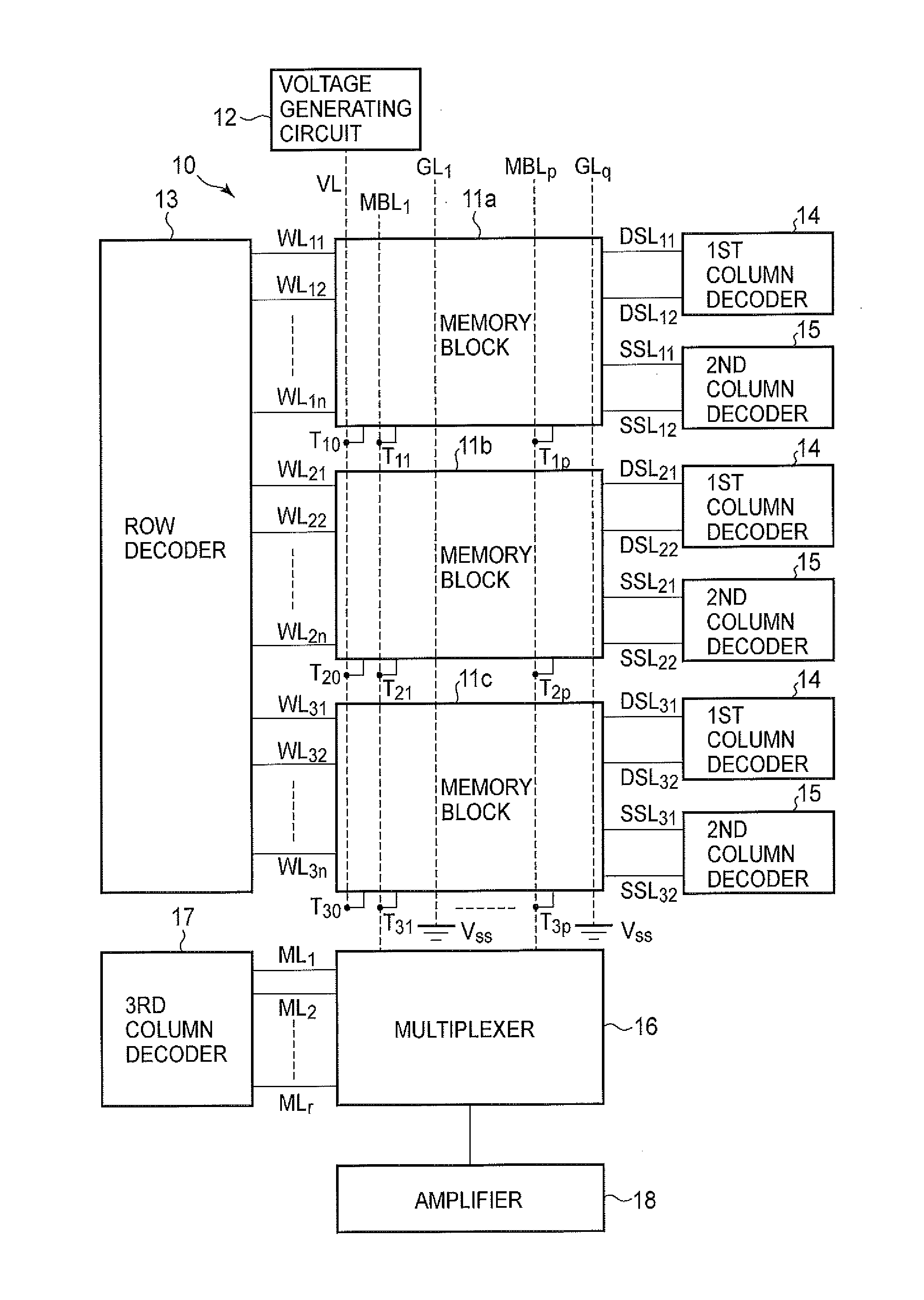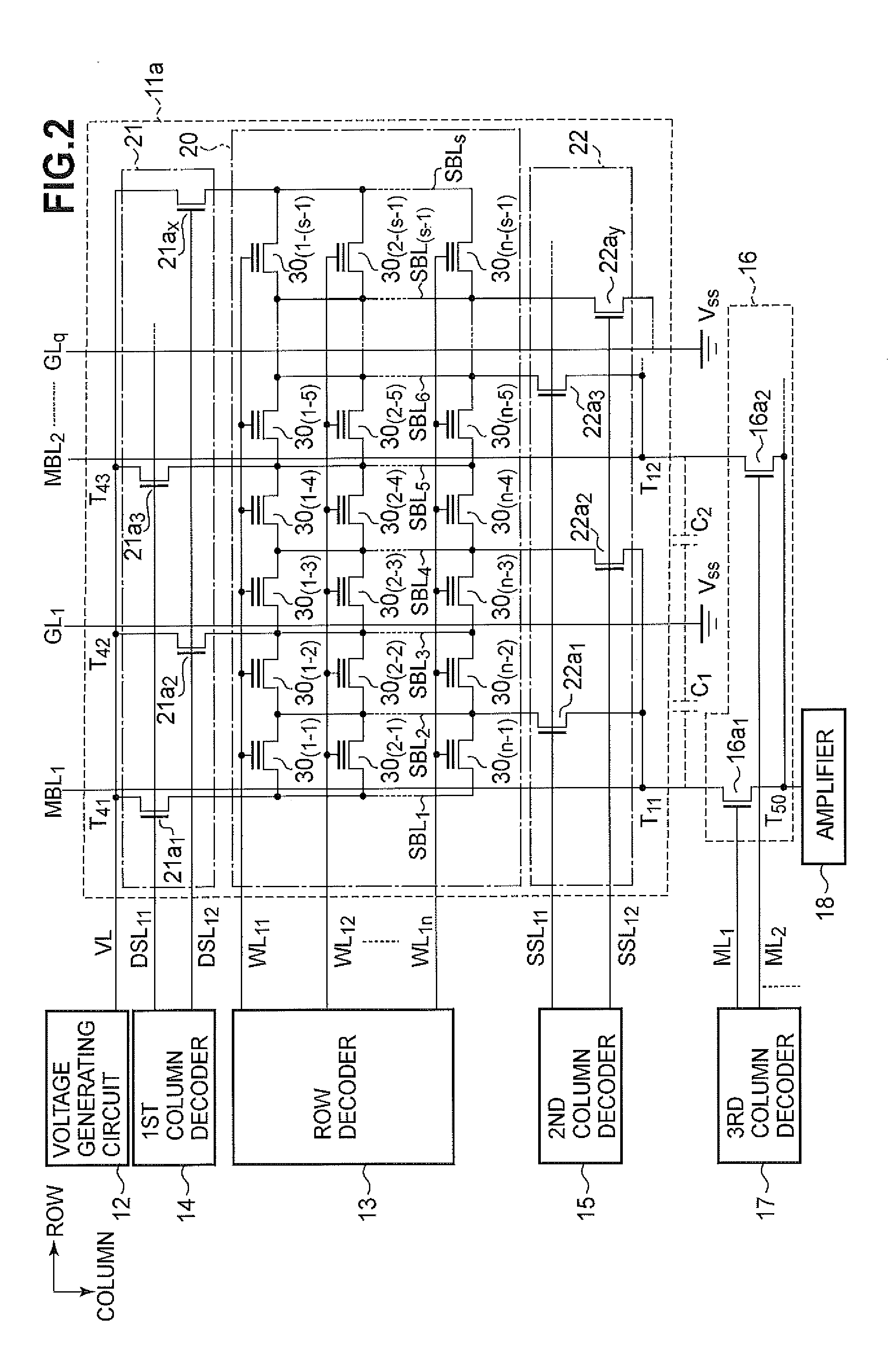Semiconductor device
a semiconductor memory and device technology, applied in static storage, digital storage, instruments, etc., can solve the problems of volatile semiconductor memory, incompatibility with small circuit size, and risk of reading data incorrectly, so as to reduce the effect of parasitic capacitive coupling, high accuracy, and low cos
- Summary
- Abstract
- Description
- Claims
- Application Information
AI Technical Summary
Benefits of technology
Problems solved by technology
Method used
Image
Examples
Embodiment Construction
[0025]A semiconductor memory embodying the invention will now be described with reference to the attached drawings, in which like elements are indicated by like reference characters.
[0026]Referring to the block diagram in FIG. 1, the semiconductor memory 10 includes three memory blocks 11a, 11b, 11c that receive a predetermined voltage from a voltage generating circuit 12. The memory blocks are connected in common to a row decoder 13 and a multiplexer 16, and each memory block is also connected separately to a first column decoder 14 and a second column decoder 15. The multiplexer 16 is connected to a third column decoder 17 and an amplifier 18. The row decoder 13, first column decoders 14, second column decoders 15, and third column decoder 17 function as driving circuits.
[0027]The memory blocks 11a, 11b, 11c are connected to the multiplexer 16 via p main bit lines MBL1, MBL2, . . . , MBLp (where p is a positive integer). Reference characters MBL will be used without subscripts whe...
PUM
 Login to View More
Login to View More Abstract
Description
Claims
Application Information
 Login to View More
Login to View More - R&D
- Intellectual Property
- Life Sciences
- Materials
- Tech Scout
- Unparalleled Data Quality
- Higher Quality Content
- 60% Fewer Hallucinations
Browse by: Latest US Patents, China's latest patents, Technical Efficacy Thesaurus, Application Domain, Technology Topic, Popular Technical Reports.
© 2025 PatSnap. All rights reserved.Legal|Privacy policy|Modern Slavery Act Transparency Statement|Sitemap|About US| Contact US: help@patsnap.com



